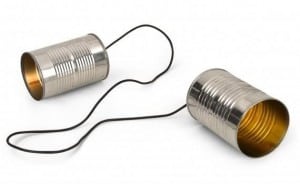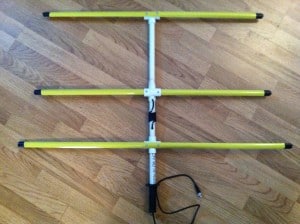Communications in our day-to-day lives has become easy and affordable now that cell phones and smart phones are the norm. Most have internet capability and pulling up a map with directions to that new restaurant or finding the closest gas station is taken for granted that it will always be there.
But what happens if the cell phones stop working due to a natural disaster like an ice storm or earthquake taking down power lines and cell towers, what is your back up plan? Shortly after Katrina we lost all phone service for the entire 504 area code both land at first and then a day or so later cell phone service.
First you need to consider where family members are during normal weekdays and weekends to be able to start seeing how close or far apart everyone is on average. A local map to plot their positions would be a good thing to start this process with or you could use something like google maps to create yours.
Second is to compile a list of phone numbers for family members and close friends and write them down on paper somewhere. A dead cell phone where we all store our contacts won’t be of much use. Numbers for cell, home land lines and work landlines.
A good plan should include multiple options so if one method does not work there is another way to attempt to communicate.
Option One is Voice communications with cell phones or land lines.
Option Two is to try and use texting with your smart phone. Texting does not require as much power and bandwidth so in some cases it will work even when the voice will not.
Option Three is by two-way radio, either using CB radios or one of the hand held GMRS / FRS / MURS radios that are available. For our family we have chosen Baofeng UV-5R that is kept in each of our cars. I chose these because of their ability to receive and transmit on all the GMRS / FRS / MURS as well as 2 meter and 440 cm short wave frequencies. They are stored in a Communications kit that is a modified ammo can that is EMP proof. Inside is a Baofeng UV-5R that is programmed with all the FRS, GMRS, MURS, and National Weather Service frequencies plus several of our local 2-meter repeater frequencies and some simplex frequencies. That along with spare batteries, an auxiliary external magnetic mount antenna and a charging cord for the cigarette lighter socket. The external antenna greatly increases the range of these radios over the standard one that comes with it. Also is a written copy of our families agreed upon specific frequencies, contact times and coded safe/distressed words and phrases along with primary, 2nd, third and 4th meeting place options if we are in different parts of town.
Although my wife and daughter do not have their HAM license as I do, I have shown them how to operate the radios and change frequencies. Further, with practice, we have learned and have a good idea what distances we can communicate with each other using the radios.
A family communication plan can and should use a variety of strategies. They can involve phone trees, “text trees,” social media, the Red Cross check-in website SafeandWell.org or some plan to physically meet up after a disaster.
Homeland Securities web site at Ready.gov has links to different planning forms to help you to create your family’s plan.
No matter the method, a family communication plan should include as many of these elements as practical and possible.

